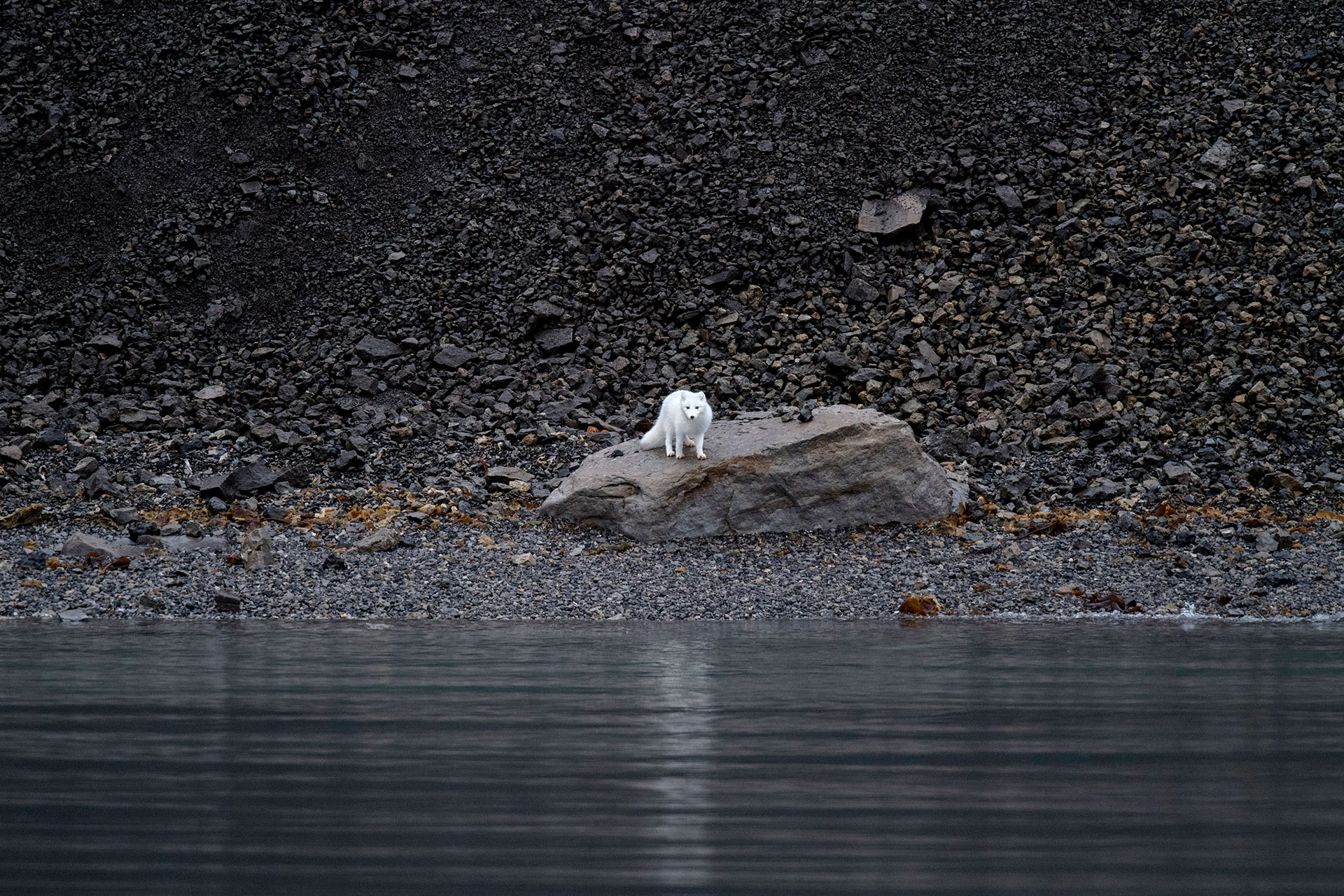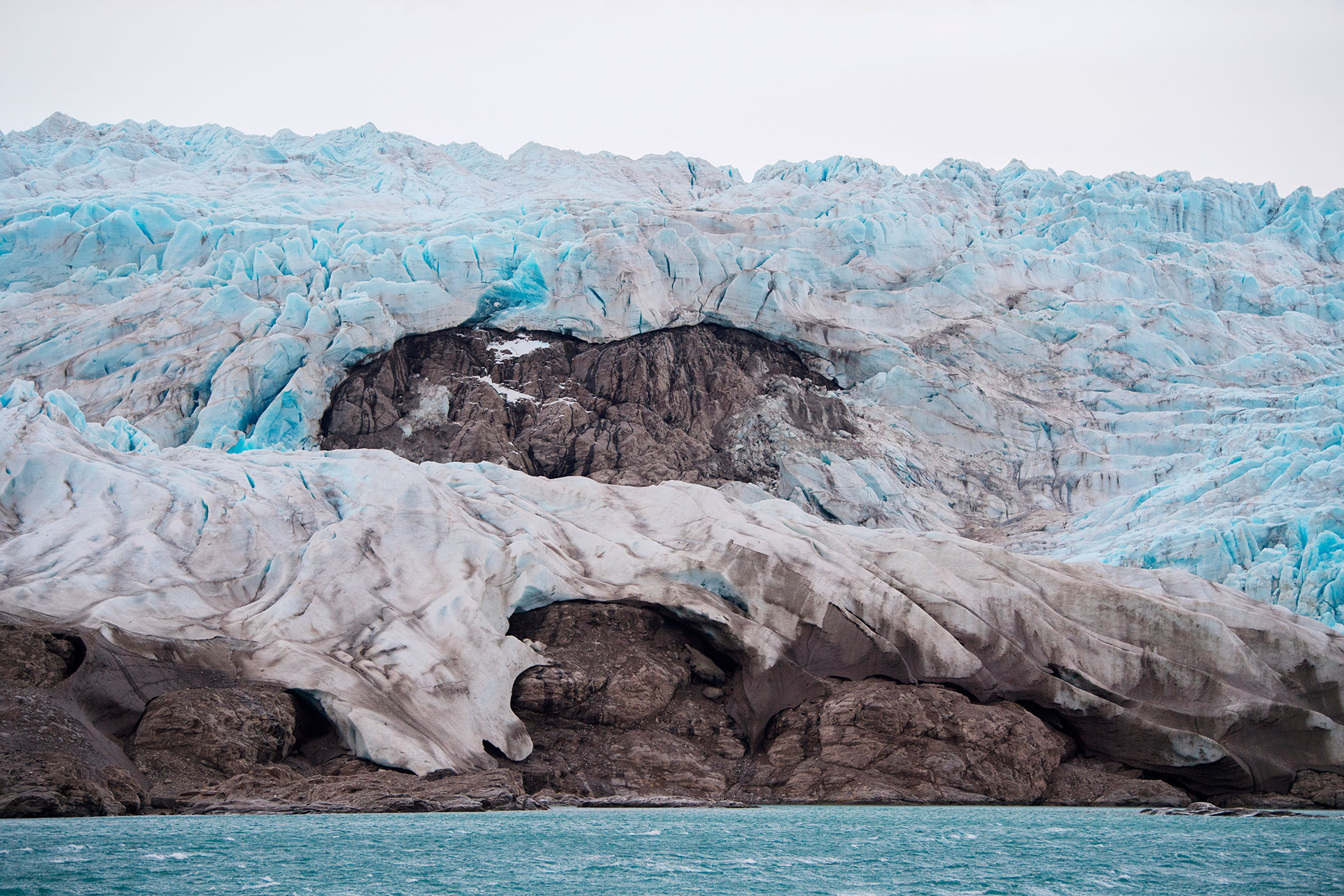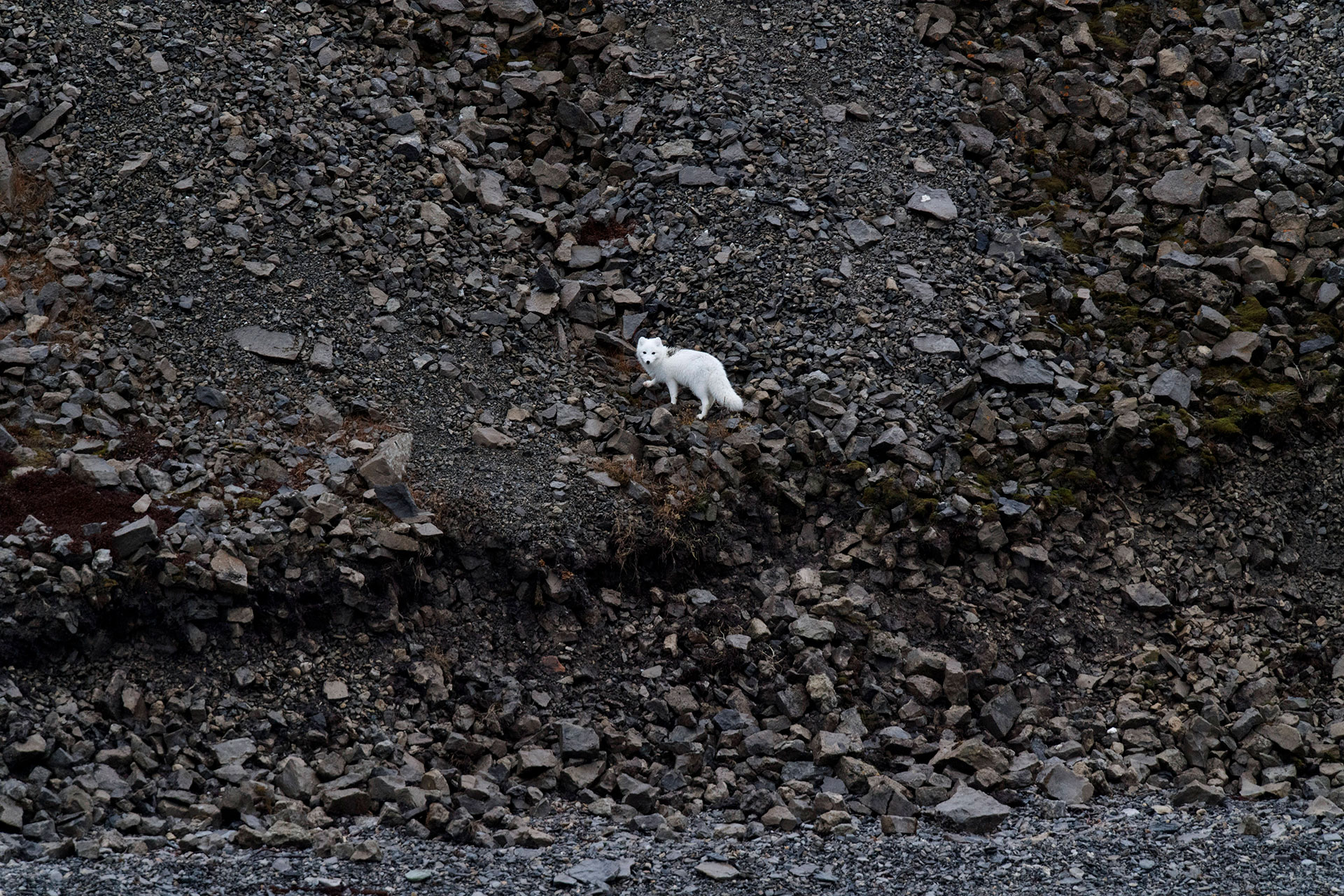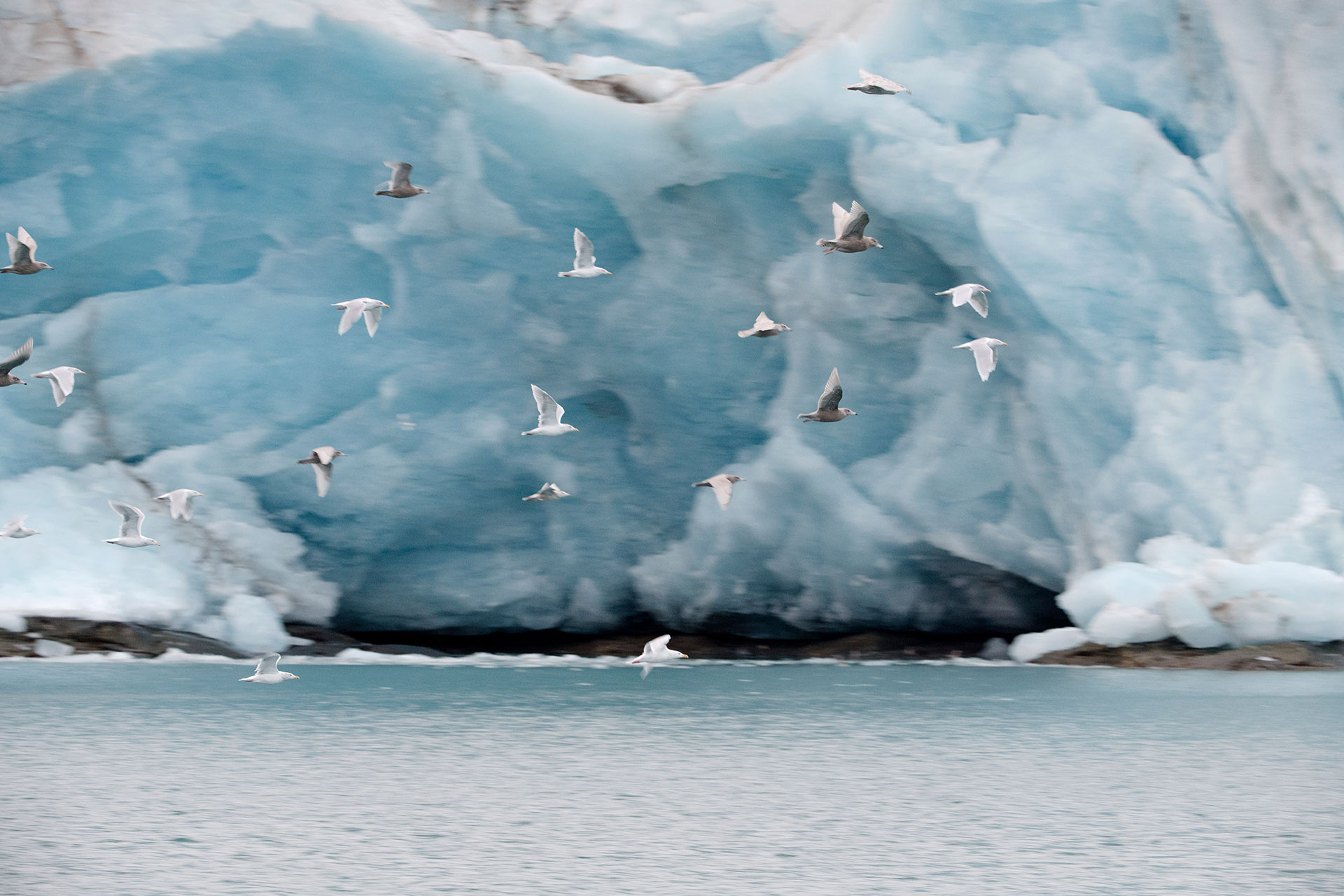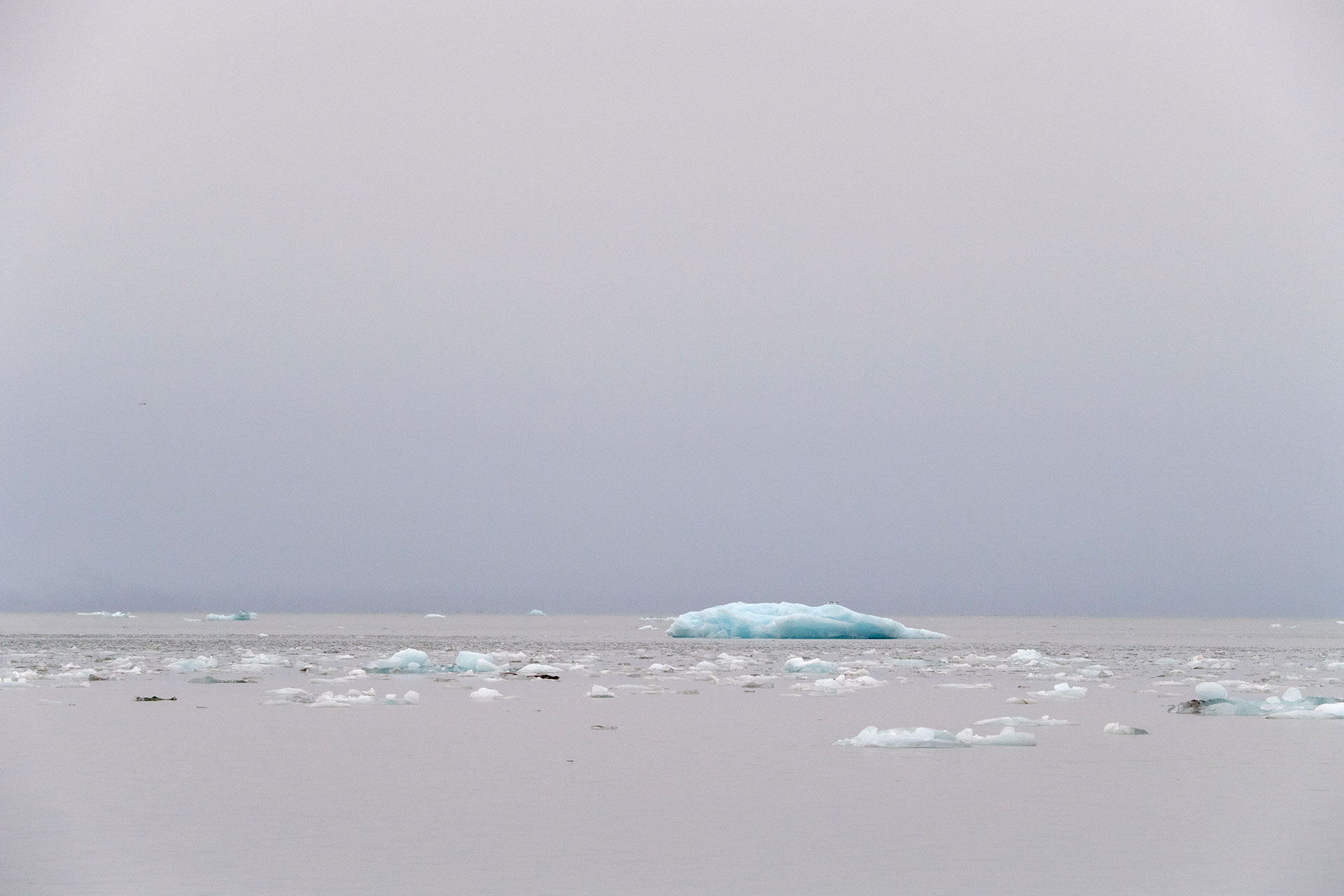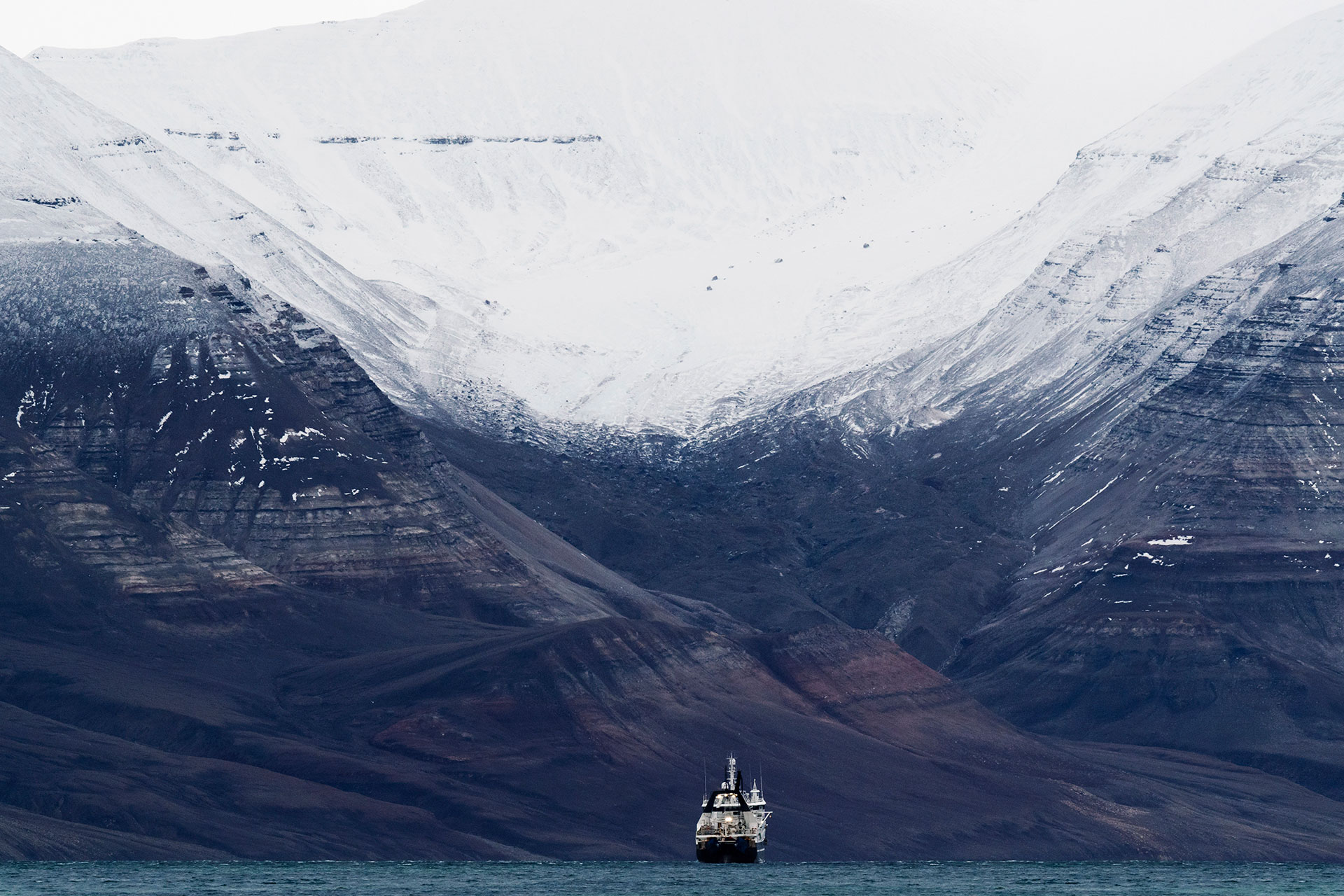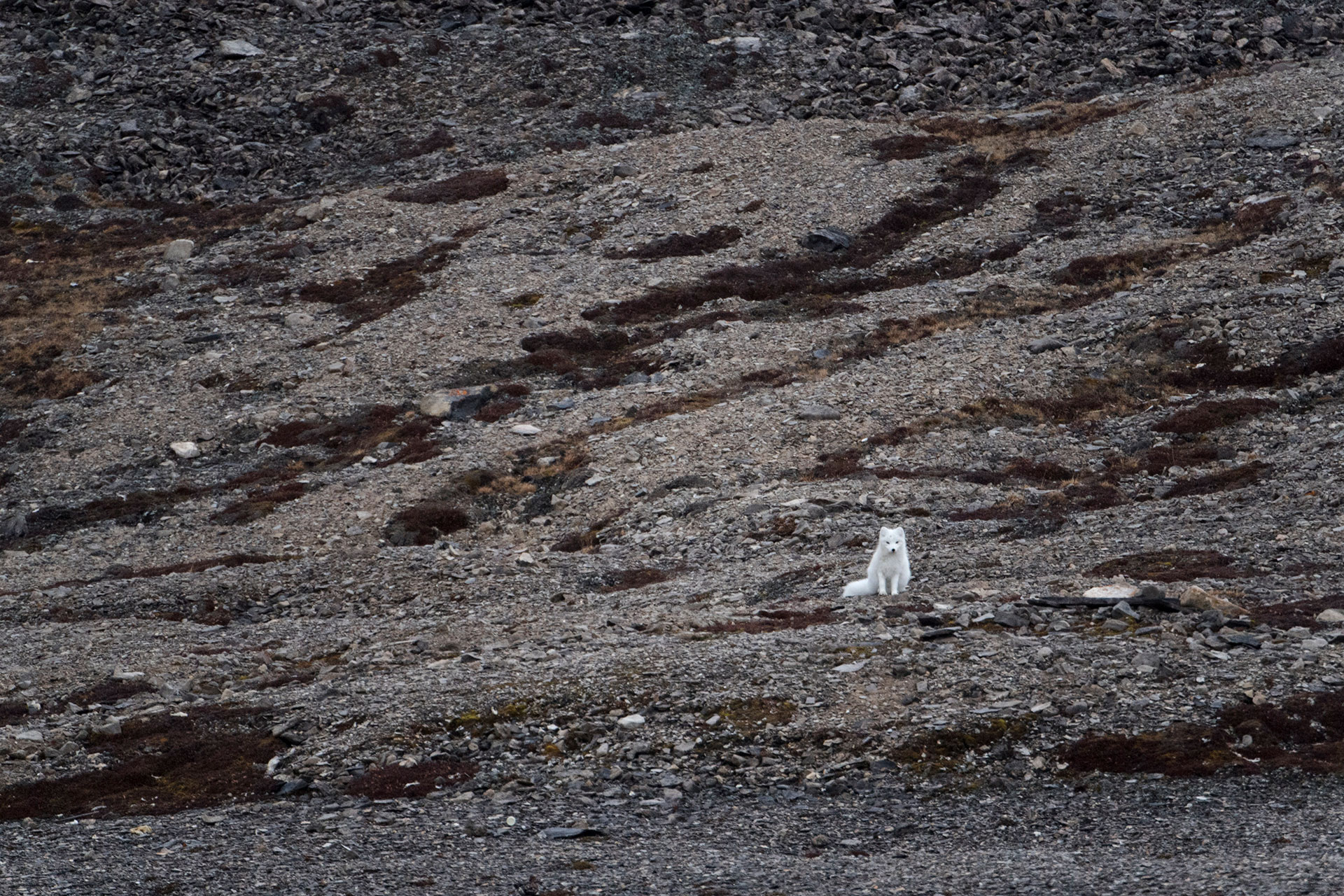SDG 13: Climate action >
SDG 13: Take urgent action to combat climate change and its impacts
Svalbard Islands
In the northernmost inhabited point of the Svalbard Islands, in Norway.
However, the photographer Guindani was not met by the millennia-old ice floes on whose surface white bears dig for food. Instead, he found expanses of rock and earth bathed by an Arctic Ocean that is advancing ever more menacingly to cover the land.
The causes of this scenario are diverse, but all sadly attributable to human action: pollution, global warming, mass tourism and attempts to exploit the land.
All these elements are contributing to an increasingly bleak and dramatic scenario. Tens of thousands of animals are losing their natural habitats and are seriously threatened with extinction.
This is why the symbolic photo chosen by Banca Generali and Stefano Guindani to represent the dramatic situation is that of an Arctic fox: the snowy white of its fur, once a precious ally for camouflaging itself among the ice, stands out against the intense brown of a rocky wall where it tries in vain to find food.
The other shots show the rapid transformation taking place in the once paradisiacal natural ecosystem of the Svalbard Islands. Melting glaciers expose black earth and turn the waters of the Arctic Ocean grey.
The resulting reduced level of whiteness attracts and retains the sun and heat, so much so that in July 2020 the highest temperature ever was recorded here: a whopping 23°C, a far cry from the usual 0°C. This is why the current geophysical situation on Svalbard confirms a thesis that is beginning to make headway in the international scientific community: the battle against climate change may already be lost.
On our trip, however, we came across those who are not giving up and are at least trying to limit the effects.
Scientists at research stations on Svalbard are working on solutions that could significantly reduce the effects of rising temperatures. One such solution is to sprinkle the black rock with white sand to help reject some of the heat, bring down temperatures and give a breathing space to a struggling ecosystem of flora and fauna.
Date:
July 21, 2023


